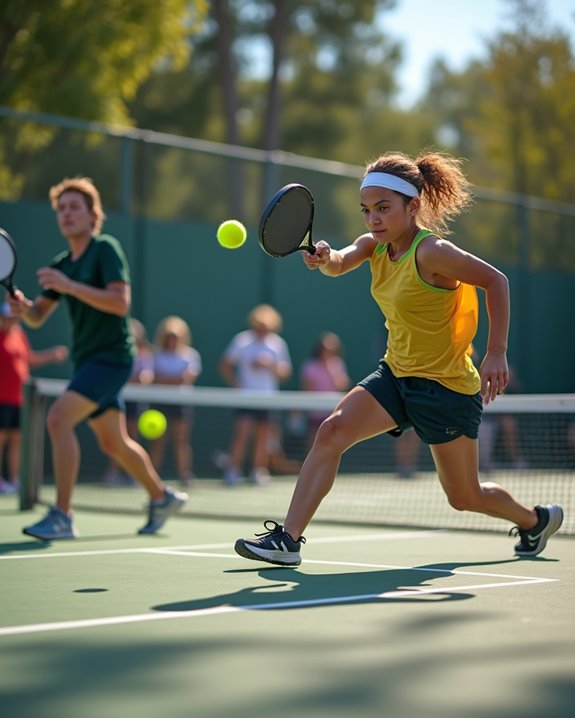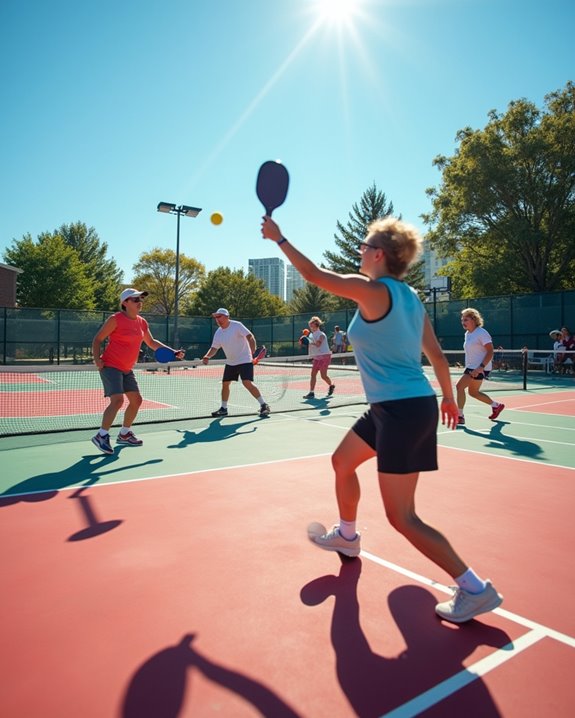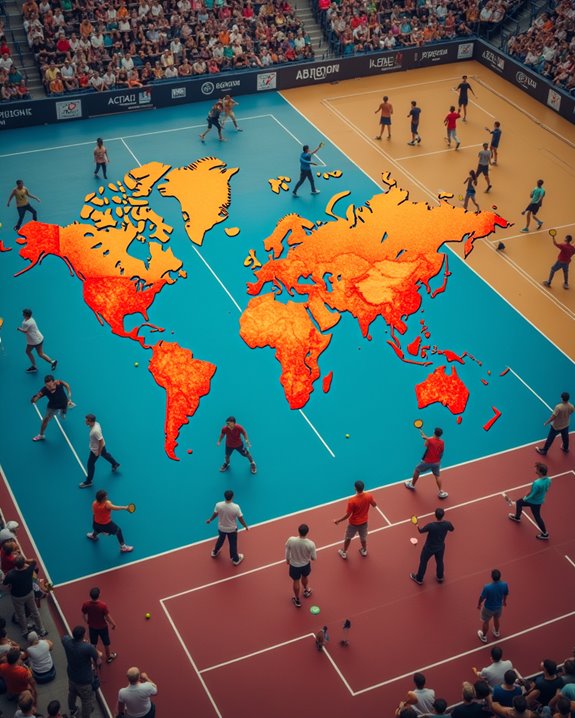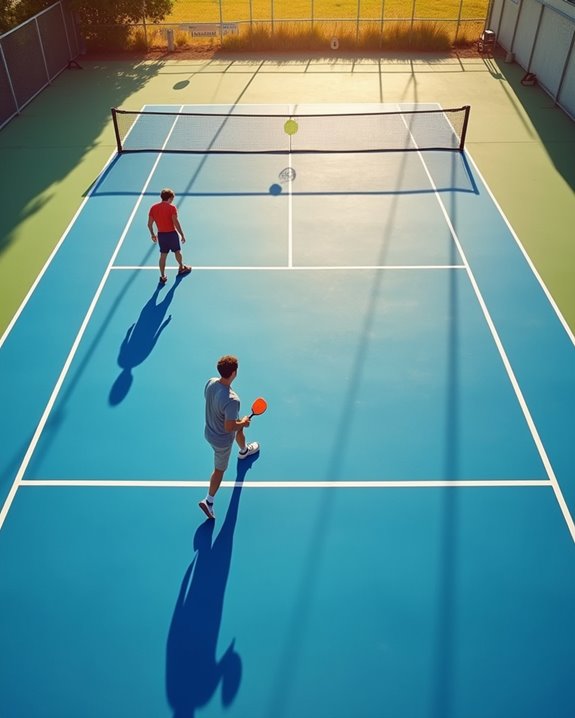Yes, pickleball is absolutely a legitimate sport! You’ll find it has all the key ingredients of traditional athletics: standardized rules, physical demands, and competitive structures. Like a perfectly balanced recipe, it blends elements of tennis, badminton, and ping-pong on a smaller court. With over 3 million Americans participating and professional tournaments nationwide, pickleball has simmered from backyard pastime to recognized athletic pursuit. Discover why this zesty sport continues to win over players of all ages.
Key Takeaways
- Pickleball is governed by established rules from the USA Pickleball Association, with formalized standards for competition and play.
- The sport has evolved from a backyard pastime to hosting official tournaments since 1976, demonstrating competitive legitimacy.
- Pickleball requires specific skill development, strategic thinking, and tactical shot placement similar to traditional sports.
- Over 3 million Americans participate in pickleball across recreational to competitive levels, showing widespread recognition.
- Pickleball offers documented health benefits including cardiorespiratory fitness improvements, engaging multiple muscle groups during play.
Defining the Elements of a Legitimate Sport
The sizzle of competition and the crisp pop of a well-struck ball are hallmarks of any legitimate sport, and pickleball is no exception. When you step onto pickleball courts, you’re entering an arena governed by well-established rules that have been carefully simmered to perfection by the USA Pickleball Association.
What makes any activity graduate from game to sport? You need structured rules, skill development requirements, and competitive opportunities. Pickleball serves up all three! The sport folds in elements of strategy—like a master chef combining ingredients—while requiring you to whisk together agility and precision in your movements. With over 3 million Americans now savoring the game, from casual recreational players to tournament competitors, pickleball has proven it’s not just a flash in the pan. Additionally, the use of high-quality equipment, such as the R3 Nova pickleball paddles, enhances player performance and enjoyment of the game.
The Physical Demands of Pickleball
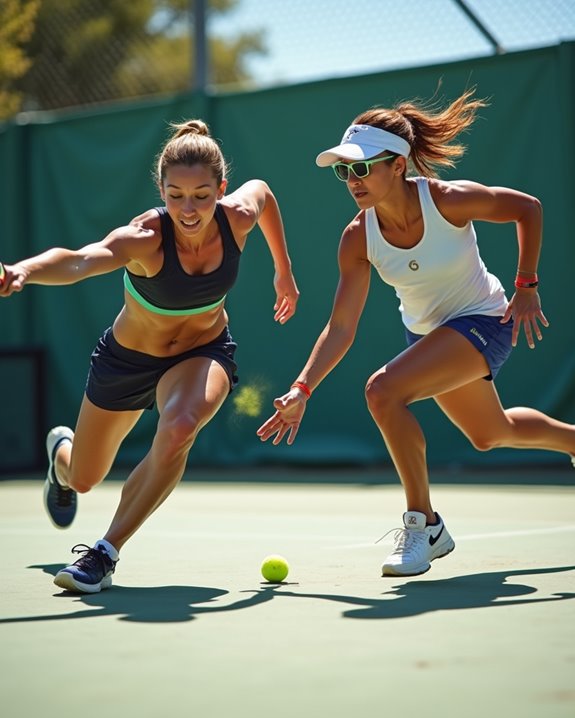
Despite looking deceptively simple to casual observers, pickleball serves up a hearty portion of physical demands that’ll make your muscles sizzle and your heart rate simmer.
You’re not just playing—you’re whisking together cardio, strength training, agility, and balance into one zesty workout. Every quick lateral movement across the court is like folding ingredients into your fitness batter, while your hand-eye coordination gets a thorough kneading with each strategic shot placement.
Before diving in, prep your body like a chef preheats an oven. Incorporate lunges and arm swings to warm up properly. While it’s gentler than some sports, don’t be fooled—pickleball can still strain your knees and shoulders when you change direction suddenly. The payoff? Reduced blood pressure and improved cardiorespiratory fitness that’s worth savoring.
Skill Development and Competitive Structure
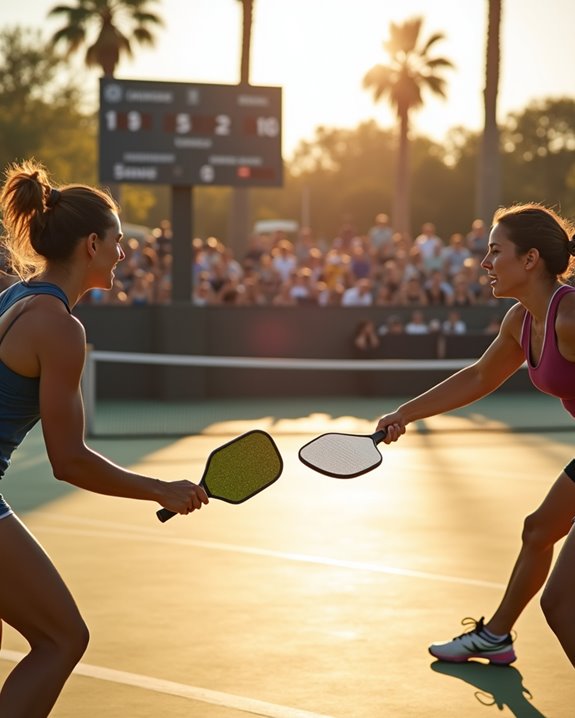
While mastering pickleball basics might seem like nailing a simple recipe, competitive play transforms this accessible activity into a gourmet sport with layers of complexity waiting to be savored.
You’ll find your skills simmering to perfection through strategic shot placement and tactical thinking—essential ingredients in any pickleball player’s repertoire. The beauty lies in the sport’s perfectly balanced competitive structure, with tournaments at local and national levels serving as the perfect proving grounds for your evolving technique. Many players find that using high-quality materials in their equipment, such as graphite fiber paddles with honeycomb cores, can significantly enhance their performance.
What makes pickleball particularly appetizing is how quickly you can progress from raw beginner to seasoned competitor. Whether you’re just getting a taste of organized leagues or you’re hungry for tournament play, the sport offers a full menu of competitive opportunities that cater to every skill level.
Comparing Pickleball to Traditional Athletic Activities
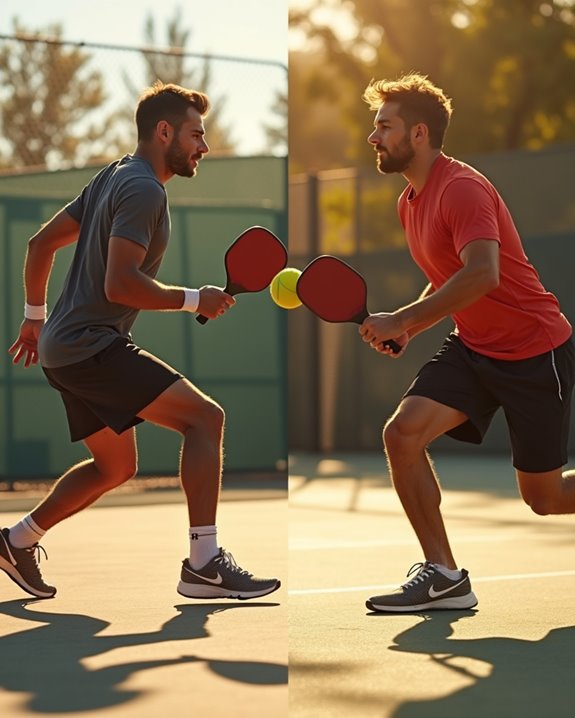
Stepping away from the competitive cooking pot of pickleball tournaments, let’s sample how this paddle-wielding phenomenon stacks up against its athletic cousins on the sports menu. When you play pickleball, you’re getting a lighter athletic “appetizer” compared to tennis’s full-course workout. A Canadian study confirms you’ll take fewer steps than during a casual stroll!
While traditional sports like basketball require complex techniques that need simmering over time, pickleball’s easy to learn recipe makes it instantly satisfying for beginners. You’ll achieve proficiency quickly, but this convenience comes with tradeoffs. The physical demands are less intense—think sautéing versus vigorous stir-frying. Your community might even be replacing traditional court “entrees” with pickleball “small plates,” raising questions about which athletic dishes deserve space on our collective table.
Health Benefits and Injury Considerations
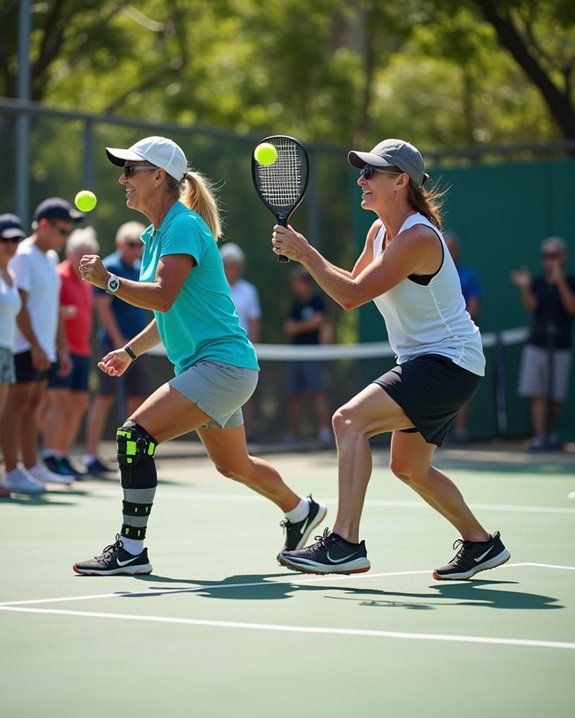
Although pickleball might seem like a light appetizer in the sports buffet, don’t underestimate its nutritional value for your body’s health menu! You’ll enjoy a hearty serving of cardiorespiratory fitness while reducing your blood pressure and cholesterol levels—especially if you’re in your golden years.
When you mix this sport into your weekly routine, you’re whisking together improved hand-eye coordination with mental sharpness for a perfect health blend. However, like any intense dish, injuries can occur. If you experience the bitter taste of sprains or strains, follow the R.I.C.E. recipe: Rest, Ice, Compression, and Elevation.
To keep injuries off your plate, simmer in a proper warm-up before play—jogging and dynamic stretching make excellent preparatory ingredients. Watch your form to avoid specialized ailments like “pickleball elbow”!
The Social and Psychological Dimensions
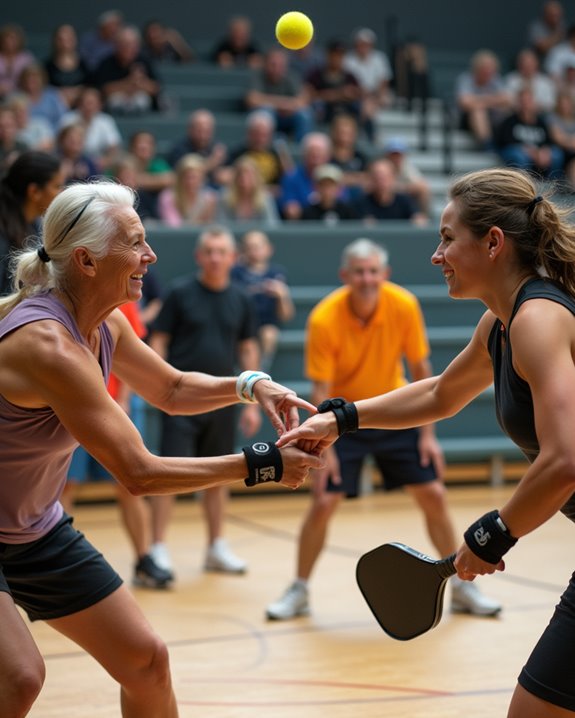
Beyond the physical health menu of benefits, pickleball serves up a feast for your social and mental wellbeing too!
When you step onto the court, you’re not just playing a game—you’re joining a community of over 3 million players who are stirring up friendships while folding in fun. The doubles format creates the perfect recipe for social interaction, as you’ll build camaraderie that simmers long after the match ends.
For seniors especially, pickleball is the secret ingredient to an active social life. You’ll find the mental health benefits are equally delicious—keeping your mind sharp while reducing stress. The supportive environment acts as a psychological garnish, enhancing your overall enjoyment and wellbeing.
In pickleball’s social banquet, everyone’s invited to the table!
Professional Circuits and Tournament Play
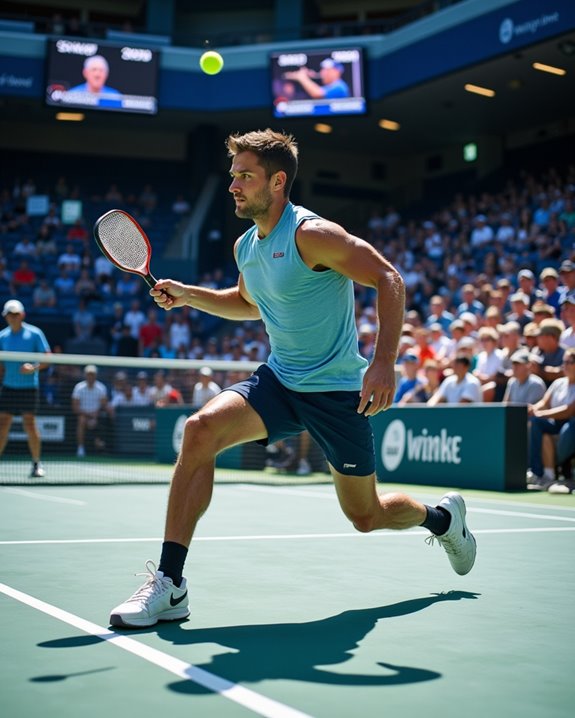
While recreational players enjoy casual rallies at local courts, the professional pickleball scene has transformed into a sizzling pot of elite competition! You’re witnessing the sport being served up at the highest level through organized leagues like the PPA and APP, which have become the main ingredients in pickleball’s professional recipe.
Major tournaments are now being plated for mass consumption, with events like the USA Pickleball National Championships offering a feast of competitive play and substantial prize money. You’ll find these tournaments perfectly seasoned with media coverage on platforms like ESPN, adding legitimacy to the sport’s professional status.
The establishment of ranking systems has been the perfect garnish, allowing players to showcase their skills while you follow their rise through competitive brackets in this rapidly expanding culinary delight of a sport.
Community Impact and Resource Allocation
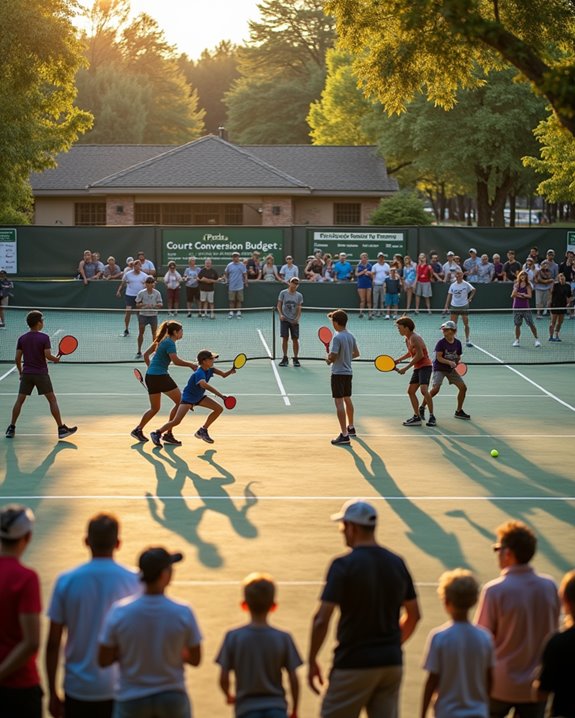
The sizzling growth of pickleball hasn’t just transformed professional circuits—it’s reshaping entire community landscapes like a chef rearranging kitchen stations! You’ve probably noticed tennis courts in your neighborhood being sliced and diced into multiple pickleball courts, serving up a controversial resource allocation dilemma.
With over 3 million players now hungry for court time, communities are scrambling to satisfy this appetite while traditional sports enthusiasts simmer with frustration. It’s like watching Zumba take over boxing gyms—a complete flavor profile change!
The noise from paddle-to-ball contact has even prompted legal action in some neighborhoods, adding another layer to this complex dish. You’re witnessing a real-time debate about how public recreational resources should be distributed when a new sport rises to a rapid boil.
Historical Evolution From Backyard Game to Athletic Pursuit
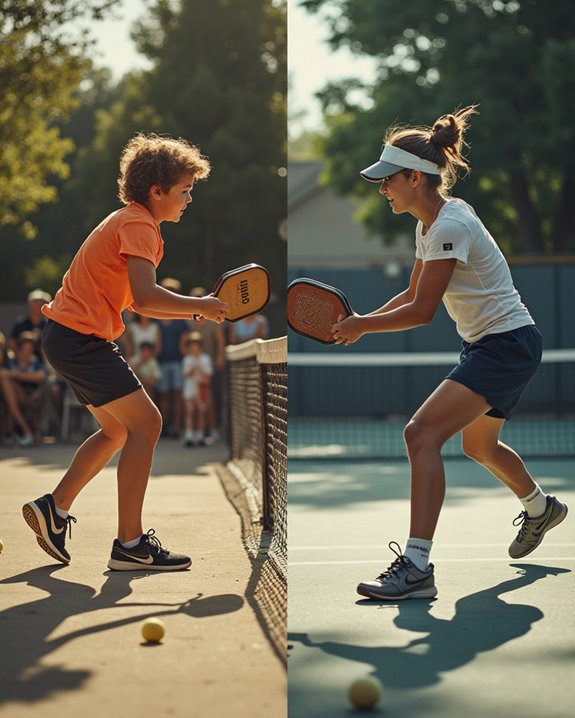
Since its humble beginnings in 1965, pickleball has transformed from a family’s improvised pastime into a full-fledged athletic phenomenon—much like how a simple roux evolves into a complex gumbo!
When Joel Pritchard and friends first whipped up this recreational recipe using ping-pong paddles and a perforated plastic ball, they couldn’t have imagined its future prominence. The historical evolution of pickleball from backyard origins to formal competition mirrors many established sports’ journeys.
You’ll appreciate how this game encourages participation across generations. By 1976, the sport had simmered enough to host its first tournament. Now, with over 3 million players nationwide, pickleball has been plated as America’s fastest-growing sport. From makeshift courts to dedicated facilities, pickleball has been carefully folded into the legitimate sports landscape.
Frequently Asked Questions
Is Pickleball Even a Real Sport?
Yes, pickleball is definitely a real sport. Since its origins in 1965, it’s grown tremendously with established rules, national tournaments, and millions of players. You’ll find it requires genuine athletic skill and strategy.
Why Is Pickleball Controversial?
You’re stepping into a whirlwind of debate! Pickleball’s controversial due to noise complaints, court competition, and perceived age stereotypes. The pickleball community struggles with establishing universal pickleball etiquette that satisfies everyone affected by its rapid expansion.
What Are the Negatives of Pickleball?
You’ll face injury risks like torn ligaments and “pickleball elbow” when playing. The social dynamics can be frustrating with noise complaints from neighbors and facility conflicts with other sports enthusiasts in your community.
Is Pickleball Actually Good for Your Health?
Yes, pickleball is excellent for your health! You’ll enjoy numerous health benefits including improved blood pressure, cholesterol levels, and cardiorespiratory fitness. It provides a full-body workout that enhances your physical fitness while being low-impact.

